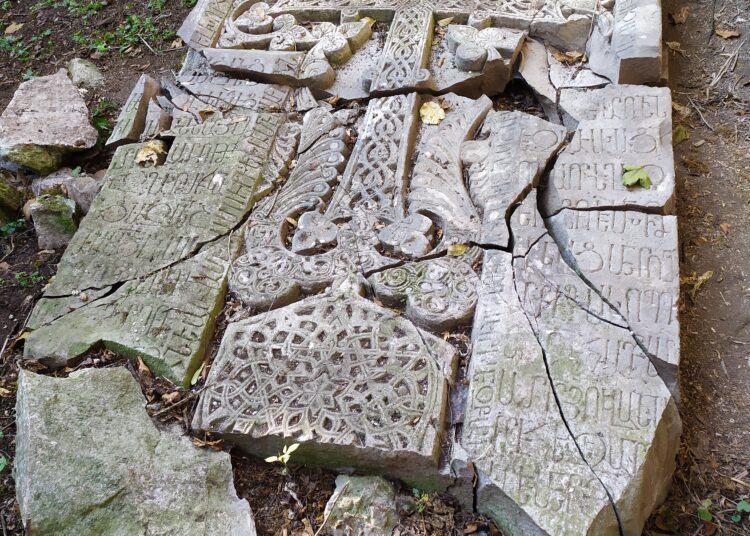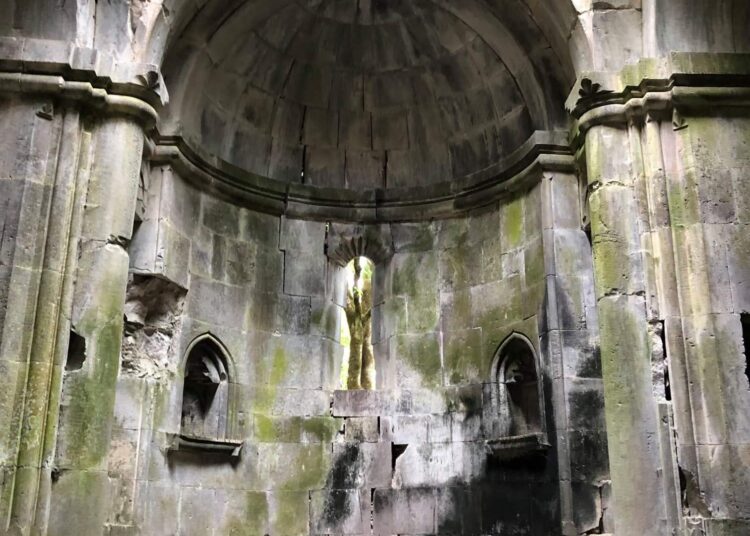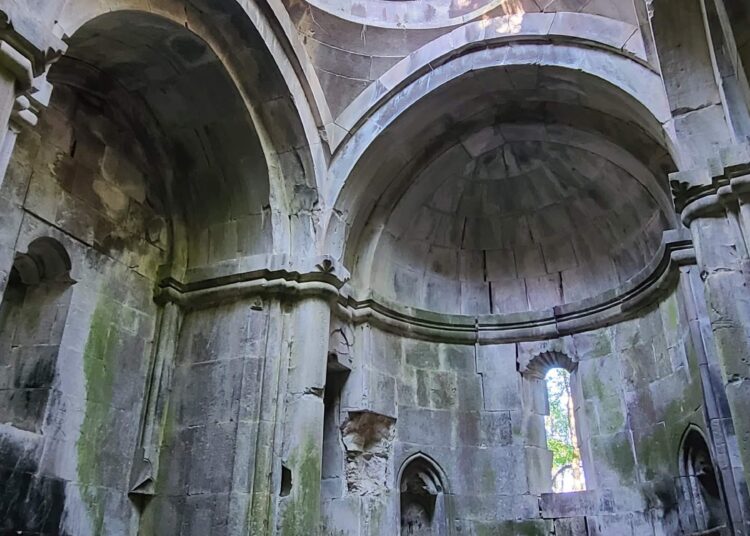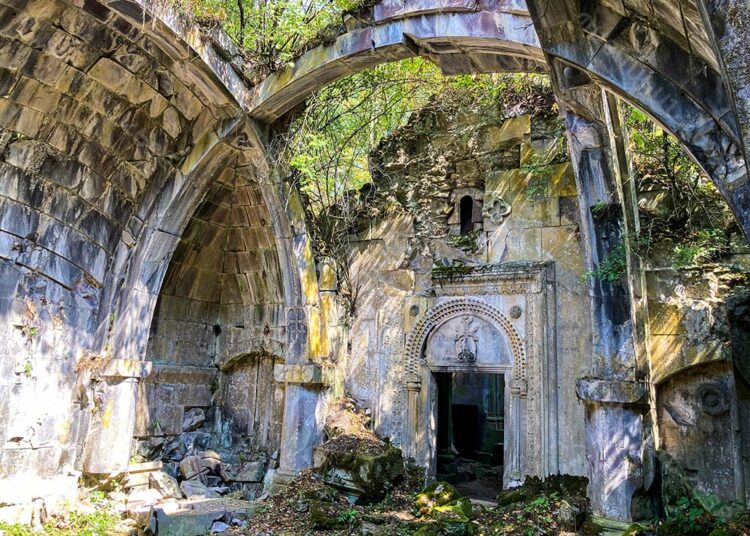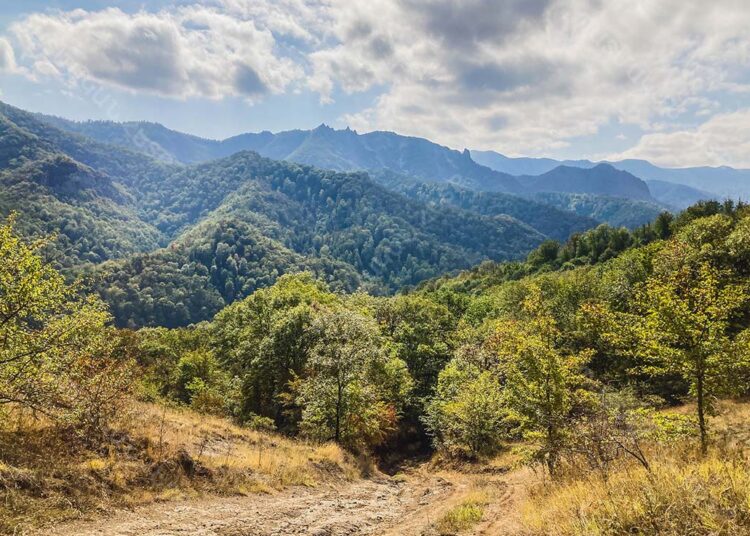The Deghdznut Monastery, located in the Tavush Province of Armenia, stands as a captivating relic of medieval Armenian architecture and history. Nestled approximately 9 kilometers southeast of Acharkut village, and nestled within the serene surroundings of the Khndzorkut River gorge, this monastery carries a legacy that dates back to the 8th century.
The founder of the monastery, Archimandrite Arakel of the Kilikian city of Tarsus, left an indelible mark on the complex’s history. Fragments of his tombstone remain preserved in the monastery’s narthex to this day, a silent testament to his influence (1292).
The Deghdznut Monastery showcases the intricacies of medieval Armenian architectural brilliance. It is enshrined amidst a cemetery and the ruins of the medieval settlement of Deghdznut (10th-14th centuries). The complex comprises two churches and a narthex.
The primary church (1258) of the monastery is crafted from a dark pink hewn tuff. It takes the form of a rectangular domed hall. The contours of the altar are shaped by eastern columns, flanked on both sides by two-story annexes. The church’s vault is supported by arches formed from interconnected semi-columns, which also serve as support for the now partially collapsed drum and dome. The church is distinguished by its intricate external and internal decorations, drawing attention to its artistic opulence.
The narthex (13th century), constructed from the same stone as the church, abuts the western side. It is a rectangular structure devoid of columns. The narthex’s vault is formed by two intersecting arches, which create a low drum with a skylight in the center—a feature typical of buildings from that era. The richly adorned eastern portal, connecting the church and narthex, holds significant artistic value. A delicate cross adorns the lintel directly above the entrance, adorned with intricate botanical and geometric patterns. The western portal of the narthex is equally lavishly embellished. The narthex’s floor and roof are paved with tiles. The walls of the narthex bear dedicatory inscriptions (13th century), revealing that its construction spanned 16 years (1258-1274).
The second church of the monastery (1275), a modest architectural structure, lies approximately 20 meters northeast of the main church. Although simple in design, this church has undergone several rounds of restoration.
Within the monastery reside fragments of khachkars (cross-stones) adorned with dates and inscriptions. Among them are fragments by the masters Petros and Kahak (1274), bearing a discernible inscription dedicated to the monastery’s foundation. The Deghdznut Monastery stands as a living connection to Armenia’s history, architecture, and the artisans whose hands crafted its enduring legacy.
![{"source":"other","uid":"DD7E18CA-6D30-40A5-B510-2D83C0AE893E_1632120576442","origin":"gallery","fte_sources":[],"used_sources":"{"version":1,"sources":[{"id":"327078846050900","type":"premium"}]}","premium_sources":["327078846050900"],"is_remix":false}](https://zartnirnews.com/wp-content/uploads/2023/08/Degh-2-750x536.jpg)
